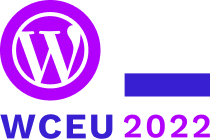How important is design in your agency? Do your website and product builds start from putting users at the centre?
Your agency can be more profitable with an approach that follows the basic principles of human-centred design. We’ll see how you can increase sales and conversions by building sites that are focussed, first and foremost, on helping out the human beings that use them. Making sure that we include all of those beings: creating products that are accessible and inclusive.
If I ask you about web accessibility, what is your first thought? Most people will say that accessibility is related to the contrast between foreground and background colours. That’s a very good answer, you must guarantee the minimum contrast value so that the text is easy to read. But what does contrast mean?
The WCAG 2.1 (Web Content Accessibility Guidelines) set the recommended and minimum contrast values as well as the algorithm to calculate the relative contrast ratio with the RGB values of each colour. Contrast calculator tools follow these rules and thresholds, even the button block deprecated in WordPress 5.4 used them to guide colour combinations.
Sadly, the current algorithm does not work as well as it should, and sometimes results do not match what our perception tells us. Let’s do a test: calculate the contrast ratio between #6666ff and #ffffff, and between #6666ff and #000000. Which colour pair generate enough contrast? Does this result match your perception?
Good news, for the next major version of the WCAG, 3.0, a new algorithm for contrast calculation will be introduced, the APCA (Advanced Perceptual Contrast Algorithm). APCA takes into account some of the properties of the visual system to make much more realistic estimations. Repeat the previous test with the APCA contrast calculator; what is the difference between colour pairs now? Why can we see font sizes and weights in the APCA results?
In this talk, I will explain, as an Optometry and Vision Sciences specialist, what contrast is, what is wrong with the current standard and how the next version will amend this. After this talk you’ll be ready to adapt your WordPress site into the next colour contrast standard.
Alt texts, or alternative texts, are the written copy behind the images we upload to our digital spaces (be it our WordPress site or social platforms).
Why are they important? Ok, for SEO, too. But mostly because they play a significant role in making our digital environment more inclusive and accessible.
Adding the correct alt text to our images is a way to make them speak, and people who use assistive technologies will also appreciate every moment of the reading experience.
In this talk we’ll see how to write accurate, expressive, and effective alt text. We’ll start from the theoretical basics to get to practical tips for inclusive content writing, using several examples and a bit of creativity.
In her Talk, Maja Benke shows what barriers a dyslexic person faces while surfing the web.
In the second step she explains which points should be considered when creating an accessible website with dyslexia in mind.
The focus will be on design, content formats and text structure and how to implement it easily in WordPress.
We’ll discuss problematic issues experienced by people with dyslexia, and how to resolve them.
